Fitness

Cardio (from the word "cardiovascular") refers to exercises which sufficiently raise your cardiac rate; a duration of at least 30 mins is necessary to burn calories, work the heart, improve blood circulation, etc. Runing, jogging, walking at a rapid pace, dancing, and swimming are all examples of cardio exercises.

Endurance is the ability to maintain a certain level of intensity in exercise for a specific period of time.
In sport, and in physical activity in general, physical endurance utilizes the following factors:
. cardiovascular and respiratory endurance: the heart and respiratory system must provide sufficient oxygen in order to maintain the desired intensity,
. muscular endurance: extended workouts involve Type I muscle fibers
. willpower, motivation, and resistance to fatigue

Literally "speed play" in Swedish, Fartlek is a form of working out which alternates high-intensity cardio (anaerobic, to build overall strength and muscle mass) with low-intensity cardio (aerobic, to oxygenate and pace the body, building endurance).
Swedish athlete Gunder Haegg broke the 5,000 meter World Record in 1942 using this method.
An example of Fartlek exercise can be as simple as running for 2 mins, slowing down to a walk for 2 mins, picking up the pace again to run, and so on!
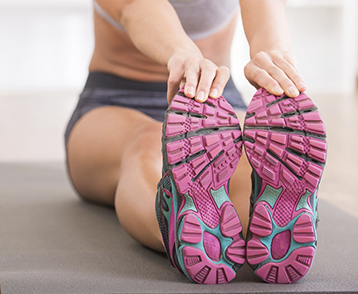
Flexibility exercises stretch your muscles and can help your body stay flexible, thus giving you more freedom of movement for other sports, as well as for your everyday activities. Flexibility exercises include include stretches for all muscle groups, as well as workouts like Yoga and Pilates.

Valerie Orsoni created a series of very powerful exercises, called Metaboosts. These routines are unique in that they can be performed almost anywhere, at any time, and range between just 5 and 15 minutes so that you can adapt them to your personal schedule.
Valerie specifically created MetaBoosts for those of us who are pressed for time and cannot always follow a regular fitness plan. These routins offer another way to squeeze in exercise every single day - even if you are traveling or if your day is incredibly hectic.
Discover MetaBoost routines in your private LeBootCamp gym.

Strength training is a physical activity with the purpose of toning and increasing muscular mass thanks to the regular practice of targeted exercises.
Strength training is not only done for aesthetic purposes i.e. to tone less appealing body zones and make them appear more in shape, but it also serves to strengthen certain muscles to prevent injury or pain (like back pain for instance which very often stems from a lack of core muscle tone).
Strength workouts include exercises such as weight-lifting, squats, lunges, plyometrics, etc.
Food
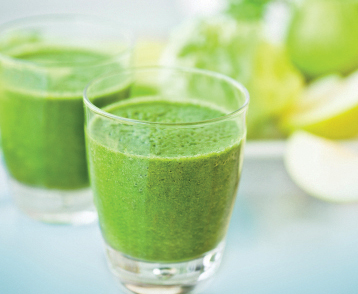
LeBootCamp Boosts are pure fruit and vegetable juices: natural concentrates of vitamins, nutrients, trace elements and antioxidants.
The boosts vary in vitamin content and color, based on their composition of fruit and vegetables, i.e:
. Green Morning Boost, packed with green vegetables is dominantly green,
. Orange Boost, containing orange and carrots,
. Blue Boost, thanks to the blueberries :)
Boosts are prepared at home with a juicer. You should drink them immediately after juicing, because they oxidize when exposed to the air and the antioxidants and vitamins lose their potency as time passes.
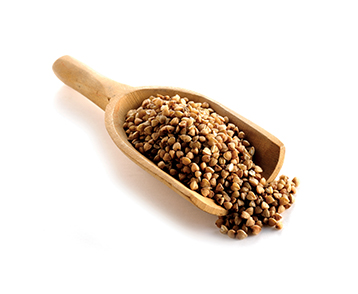
Despite its name, buckwheat bears absolutely no relation to wheat. It belongs to the same family as rhubarb and sorrel, and is categorized as a "pseudocereal" (like amaranth and quinoa).
Buckwheat is 100% gluten-free, and its culture does not require pesticides! Nutritionally, buckwheat contains complete proteins, including the 9 essential amino acids that the body cannot manufacture on its own, as well as potent antioxidants, vitamins and minerals. Its fiber is appetite curbing, and its low glycemic load helps reduce storage of sugar in the form of fat.
Buckwheat is a flagship food of LeBootCamp and features in your coach's favorite weight loss drink, the famous Sobacha (roasted buckwheat tea).
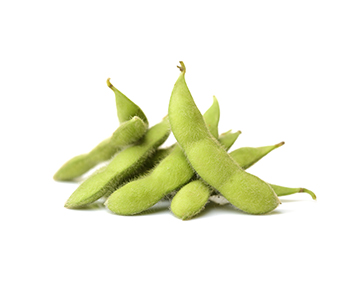
Edamame is soybeans harvested before they've fully ripened, hence the bean is still young and green in the pod. Rich in protein, dietary fiber, and micronutrients, you can find edamame in most organic groceries, and even sometimes your local supermarket.
If you can't find edamame, simply replace it with another legume, such as:
- green peas
- lentils: brown, green, coral, etc.
- chickpeas
- beans: black, red, white, etc.
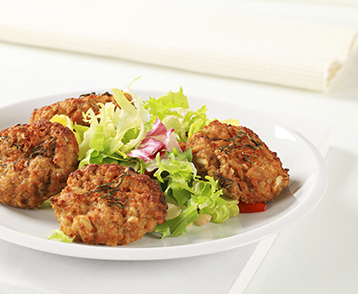
Falafel is a small vegetarian ball made with chickpeas, broad beans, and spices. It is a speciality of Middle-Eastern countries.
The good news is that its glycemic index is very low, hence, your blood sugar levels will not move much. The not-so-good news is that many restaurants fry their falafel in oil for a very a long time, the oil often becoming rancid. Therefore, it's better to make your own falafel at home, or to buy them from a place where you can trust the health and hygiene :).
Falafel can be served as a main dish in larger patties, or as an appetizer if prepared in smaller balls. Garnish with chopped parsley, and accompany with pickled cucumbers, diced tomatoes, Tahini (sesame sauce with lemon), and freshly crushed garlic.
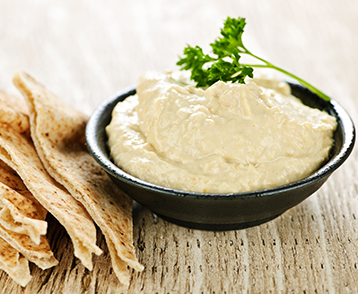
Hummus (or humus) is a typical Middle-Eastern dish made of chickpeas.
Very healthy, with a low glycemic index (thus a low impact on your blood sugar levels), and bringing good fiber and few calories, this dish is a great way to satisfy your taste buds without gaining extra weight :).
Hummus is frequently recommended in LeBootCamp weekly menus!
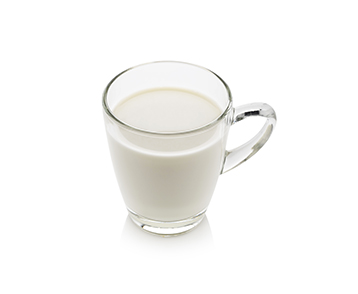
Kefir is a fermented milk drink, and can be made from any type of milk: cow, goat or sheep, coconut, rice or soy. Kefir grains ferment the milk, incorporating their friendly organisms to create the cultured product. The grains are then removed with a strainer before consumption of the kefir, and added to a new batch of milk. The resulting drink is slightly carbonated and contains some alcohol, but thankfully, this rate is very low (1% or less) compared to the more common fermentation.
Kefir is a probiotic, containing many species of microorganisms, and is used for its dietetic properties (flora, transit, health). It creates ideal conditions in the digestive tract for the colonization of friendly bacteria.
A close relative of kefir is kombucha, originating in China. Kombucha is sweetened tea that has been fermented using a macroscopic solid mass of microorganisms. Kombucha is an effective detoxifier (cleanses the body), metabolic balancer (helping the various organs work together), probiotic (supporting beneficial bacteria), and adaptogen (balancing body processes that get out of kilter).
Like kombucha, kefir is a balanced and nutritional drink which contributes to a healthy immune system. The regular use of kefir can help relieve all intestinal disorders, promote bowel movement, reduce flatulence and create a healthier digestive system. In addition, its cleansing effect on the whole body helps to establish a balanced inner ecosystem for optimum health and longevity.
To purchase kefir grains, try a Chinese pharmacy or herborist, or online sellers. You can also buy ready-made kefir from certain health food stores and organic companies.
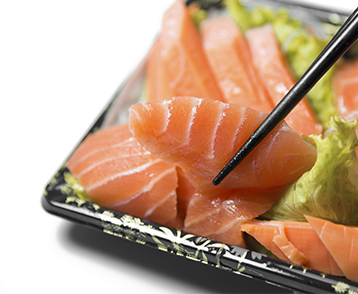
Sashimi is a Japanese delicacy of raw fish, sliced into thin pieces. In order to benefit from all the omega-3's, the fish needs to be very fresh, so if you are preparing your own, ask your fishmonger to choose and cut the fish for you.
Like all fish, sashimi has a zero glycemic index!
When eating out at a Japanese restaurant, sashimi is a LeBootCamp-friendly choice. Eat it with chopsticks (not your fingers - considered impolite to the Japanese) with some soy sauce and ginger.
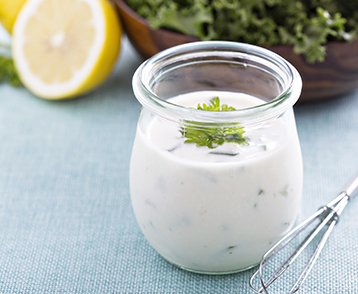
Soyannaise is mayonnaise made without eggs, but with tofu, hence, very good for your health! I prefer the store-bought soyannaise as it keeps for longer and generally has a little more taste than the one I make myself (this is the only exception to the rule of always opting for the homemade version!). That said, if you like to make your own, here is my recipe:
Ingredients:
8.8 oz (250g) tofu
1 tsp mustard
Juice of 1 lemon
Pepper
Pinch of salt
7 tbsp sunflower oil
Directions:
1. Blend the tofu, lemon juice, mustard, salt and pepper in a mixer on high speed.
2. Add the sunflower oil gradually until you obtain a smooth and homogeneous cream.
3. You can also make other dressings by using this "tofu mayonnaise" as your base.
4. Store in the refrigerator, and enjoy!
Stevia is a healthy, natural sweetener, unlike aspartame and other chemical sweeteners which are known to be hazardous to your health.
Stevia is a herbaceous plant from the Asteraceae family. Its leaves, dried and crushed, have a very sweet taste and have been used for thousands of years in South America and China. It has zero calories and a sweetening power 150 to 300 higher than that of sugar!
Consumed in Japan since the 50s, this now represents more than 75% of the sweeteners sold in this country. Although no study proving any health dangers has ever been published, it still took years for other countries to authorize stevia as a food supplement. As of 2014, it can be found in all Western countries.
You can use stevia for baking, but not for making jams, as it cannot be heated above 400°F. Stevia also lowers blood sugar levels, reduces blood pressure, and is a natural, mild diuretic. Since it does not increase blood sugar it is a natural ally for diabetics. Recommended until proven otherwise.
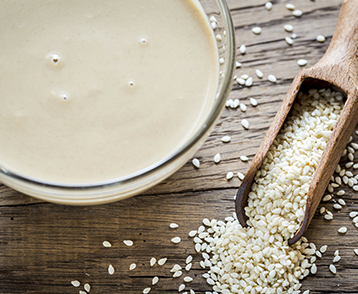
Tahini is a condiment made from sesame seeds which are crushed into a paste. You can find it in Middle-Eastern groceries, organic food stores, and most supermarkets.
Did you know? Sesame seeds are one of the best sources of calcium!
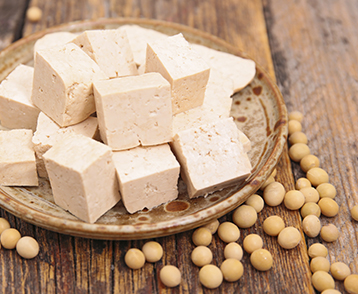
Tofu is a curd made from soy beans. An excellent source of plant protein, tofu is the king of foods for vegetarians and vegans.
Without any distinct taste of its own, it takes on the flavor of whatever it is prepared with and thus makes for a perfect protein filler in almost any dish.
You can find tofu in your local supermarket.
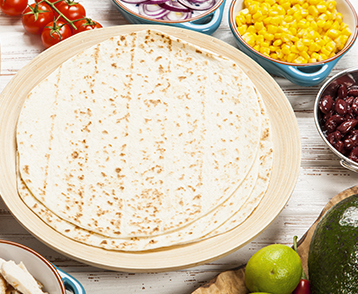
The tortilla is the queen of Mexican food. Originally made from corn, and subsequently white flour, today tortillas are made from various germinated seeds.
Tortillas are widely available in gluten-free versions, and are a weight-friendly substitute for regular bread.
You can find tortillas in organic food stores and your local supermarket.
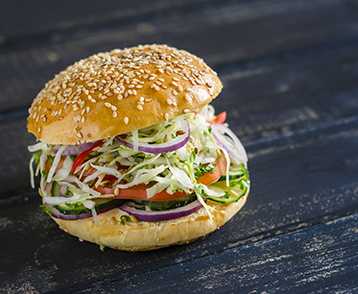
A vegetarian burger is a "hamburger" made without meat, and based on legumes or soy. This means zero saturated fat which is great!
You can find ready-made veggie burgers in your local supermarket or in any organic food store.
At LeBootCamp, we will share with you vegetarian burger recipes which you can make yourself at home. Grilled on the barbecue or cooked in a non-stick frying pan, and voila! Tastes great with a fresh green salad :).
Nutrition
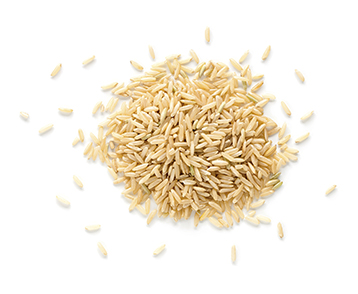
Glucids (sugars) in food are transformed into glucose by our body and constitute a source of energy for our body, particularly for the brain. Glucids can be categorized into:
1. Simple sugars, those with a single-molecular structure, including glucose, fructose (fruit sugar), and galactose; or with two molecules, including saccharose (pure sugar) and lactose (milk sugar).
2. Complex sugars, a long chain of glucose molecules: cereal starches, leguminous plants, and potatoes.
Which are better to opt for, simple or complex sugars? This answer is not that simple... Indeed, glucids are also called carbohydrates, and products in this food group have very different properties, according to their glycemic index.
The glycemic index of a food reveals the food's capacity to raise the glycemia (your blood sugar levels) after a meal. Indeed, certain foods release their energy fairly quickly into our system. If the glycemic index of a food is high (as in the case of potatoes, or white bread), this means that the glucids (sugars) of the food will be released very quickly into your blood, thus inducing a high glycemic level (a peak). However, if the glycemic index is low (as in the case of lentils and wholegrain cereals), this means that the glucids of this food will pass slowly through your blood; the glycemic level is weak.
In conclusion, it's important to note which foods have a low glycemic index, and which have a high glycemic index:
- high GI foods (to be limited): sugar, white rice, white bread, white pasta, potatoes.
- low GI foods (to opt for): complete grains which are high in fiber (wholewheat bread, wholewheat pasta, brown rice, cereals: quinoa, bulgur, rye, oats, corn), dry vegetables, vegetables, fruits, meat, fish, eggs, nuts, tofu.
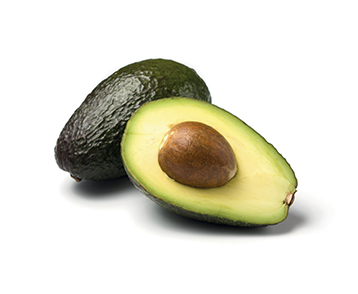
Lipids (fats) are essential for our body. Lipids are used in the composition of cellular membranes, they trigger several hormones, and ensure the transport of liposoluble vitamins (A, D, E and K).
There are various types of fats: saturated fatty-acids, mono-unsaturated fatty-acids, and poly-unsaturated fatty-acids (the famous Omegas 3 and 6).
- Saturated fats are the least beneficial for our health - found in meat, pork, butter, and cheese, for example.
- Mono-unsaturated & poly-unsaturated fats play a protective role in our body and it is important to make sure we are not deprived of them (but that's not to say they are low in calories!).
- Essential fats are found in plant oils, fish, avocado, legumes, nuts, seeds, etc.
Fats are high in calories, and it is thus very important to take account of the quantity of fat that one consumes, and most importantly, the quality. Decrease the quantity of saturated fats, replacing these with other fats which are beneficial for the body.
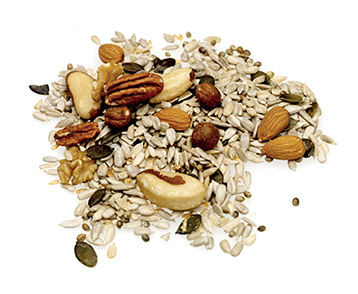
Proteins are the essential components of any living cell. They take part in many chemical reactions in the body, acting as hormonal messengers as well as immune system constituants, known as neurotransmitters.
We are so accustomed to associating “protein” with meat, chicken, fish, dairy and eggs, that we completely overlook the fact that the greatest sources of protein are often found in plant products. Indeed, there are 2 types of proteins:
- Animal proteins, found in meat, fish, eggs and dairy products, etc.
- Plant proteins, found in legumes (lentils, chickpeas, kidney beans, flageolets, broad beans, edamame), soy, tofu, nuts, pseudocereals (amaranth, quinoa, buckwheat), etc.
While LeBootCamp menus feature both animal and plant proteins, it does indeed favor proteins of plant origin because animal proteins often bring a high quantity of saturated fat..
A toxin is a substance that our body does not need and which requires energy to be eliminated. Even some elements vital to our survival, such as certain nutrients, can become toxic in large quantities. Not only are we surrounded by toxins - bacteria, parasites, viruses, pesticides, pollution and chemical products (including chemicals-loaded beauty products) - but we also directly ingest a large portion of toxins via the food we eat. Thus, food becomes our number-one source of toxins! Remember that toxins can be carcinogenic, and “carcinogenic” means “can cause cancer.”
Toxins are the cause of lethargy, poor health, dull skin, and larger fat cells - thus excess weight.
Technique

Body Mass Index (BMI) is a statistical measure of a person's weight, scaled according to height. This measure indicates the percentage of fat in the body relative to your total weight. This formula can be used for adults from 18 to 65 years, and the acceptable body fat percentage varies according to gender and age.
The following equation can be used to calculate your BMI: Weight (kg) / Height (m) squared = BMI.
Results:
Less than 15: seriously underweight,
15 to 18.5: underweight,
18.5 to 25: normal,
25 to 30: overweight,
30 to 35: moderate obesity,
35 to 40: severe obesity,
Over 40: morbid obesity

Body Fat Percentage (BFP) is a measure which most accurately determines whether one is truly overweight or not. More precise than the simple BMI, BFP also takes into account your age and your gender. Your BFP measurement reveals the amount of fat in your body, similar to the calculation made for "20% fat" on a yogurt label. A body-fat measuring scale determines the percentage of fat (via a very low current passing through your feet on the scale) relative to the rest of your body's composition: water, bones, viscera, muscles, etc.
To measure your body fat, you can use a bio-impedance scale, body-fat monitor, or skin-fold caliper. To be healthy, you should aim for a body fat ratio that corresponds to the level of those in "Fit shape".
Below are BFP averages* for women and men:
Women
Essential fat - 10-12%
Athletes - 14-20%
Fit shape - 21-24%
Acceptable overweight - 25-31%
Obese - 32% +.
Men
Essential fat - 2-4%
Athletes - 6-13%
Fit shape - 14-17%
Acceptable overweight - 18-25%
Obese - 25% +.
*Source: American Council on Exercise (ACE)
Note: Don't panic if you are in the category "Acceptable overweight" or "Obese", as with small daily efforts on LeBootCamp you can easily reduce excess body fat.

Originating in athletics and sports, the term "coach" is now widely used in almost any field. A coach is an expert who instructs others in a particular area, and can work with one or more clients at a time.
At LeBootCamp, a health & weight loss coach will assist you in achieving your health & weight loss goals, in particular, our coaches will help you modify your behavior regarding food, nutrition and fitness, offering support and motivation so that after a designated period of time you are able to manage on your own and integrate everything you have learned, thus maintaining healthy habits for long term.

Coaching is the guidance offered to an individual by a coach, which includes the processing and analyzing of data, assessment of the situation and research for possible solutions, and finally, practical assistance: working closely with the particular individual within a fixed framework in order to help him/her achieve his/her goals, whether in the private or professional sphere.
Coaching can be summarized in the following essential points:
1. Coaching helps a person to identify and boost his/her inner motivation,
2. Coaching is the analysis and application of personalized solutions,
3. Coaching develops the individual's independence (with respect to the coach),
4. Coaching enables a person to achieve his/her goals in a manner which exceeds his/her expectations!

Weight-loss experts worldwide have tried to invent the perfect formula for ideal weight. However, and while it is important to know how to calculate one’s "ideal weight" in order to set a realistic goal, it's important to remember that there is no perfect solution that will fit all.
So how can we evaluate our ideal weight? Start by using the Creff formula, which calculates your ideal weight (in kilograms) purely from a health perspective. This formula corrects the more famous Lorentz formula as it brings in two further considerations: age and morphology.
Have you ever heard someone say, “I can never be skinny because I have big bones’? Well, with the Creff formula, the size of your bones is taken into consideration. In terms of morphology, for an individual with a slight frame, 10% is subtracted from the weight calculated for an average person. Conversely,
for someone with a large morphology, 10% is added to the average ideal weight.
To determine if you are small, average, or broad, place the middle finger and thumb of your right hand around your left wrist:
Small: your thumb slightly overlaps your middle finger
Average: your thumb and finger just touch
Broad: your thumb and finger don’t even touch
Creff Formula
Small morphology:
[(height in centimeters)—100 + (age (in years)/10)] x 0.9 x 0.9
Average morphology:
[(height in centimeters)—100 + (age (in years)/10)] x 0.9
Broad morphology:
[(height in centimeters)—100 + (age (in years)/10)] x 0.9 x 1.1
Even once you determine this number, note that it is only one indication of your health. We each have a personal "cruising weight" at which we feel our best, and at LeBootCamp we will take both these numbers into account in order to set a realistic goal so that we feel great in our own skin.

Your metabolism is affected by three elements:
1. Basal metabolism: all the energy expended in order to maintain regular body functions which accounts for 65% of our daily energy needs.
2. Physical activity (running, taking the stairs, walking through the subway station, etc.) which accounts for only 25% of the energy one expends each day. This may sound surprising, but it's a fact!
3. Thermic effect of food, which accounts for 10% of our energy needs. Thermic effect is the energy expenditure for digestion and processing of food we eat. For example, if an apple brings you 150 calories, it will cost you 15 calories to digest, thereby leaving you only 135 calories to burn.
As you can see, the majority of our energy expenditure is simply for the maintenance of our body functions. Muscles consume the most energy, thus an increase in muscle mass = more calories burned, even while sleeping. The more muscular you are, the higher your metabolism, hence LeBootCamp's emphasis on increasing your physical activity. LeBootCamp will help you build an active lifestyle that suits your schedule in order to develop a harmonious muscular mass and maintain a high metabolism.

